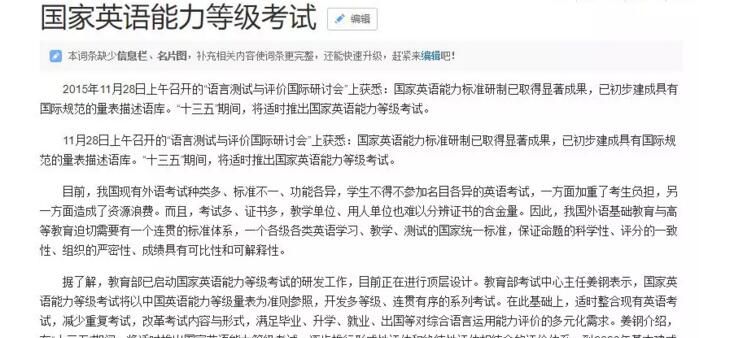LSAT模拟试题:LSAT模拟试题TEST2阅读1b
|
Historians generally agree that, of the great modern innovations, the railroad had the most far-reaching impact on major events in the United States in the nineteenth and early twentieth centuries, particularly on the Industrial Revolution. There is, however, considerable disagreement among cultural historians regarding public attitudes toward the railroad, both at its inception in the 1830s and reached the zenith of its popularity in the United States. In a recent book, John Stilgoe has addressed this issue by arguing that the "romantic-era distrust" of the railroad that he claims was present during the 1830s vanished in the decades after 1880. But the argument he provides in support of this position is unconvincing. What Stilgoe calls "romantic-era distrust" was in fact the reaction of a minority of writer, artistes, and intellectuals who distrusted the railroad not so much for what it was as for what it signified. Thoreau and Hawthorne appreciated, even admired, an improved means of moving things and people from one place to another. What these writers and others were concerned about was not the new machinery as such, but the new kind of economy, social order, and culture that it prefigured. In addition, Stilgoe is wrong to imply that the critical attitude of these writers was typical of the period: their distrust was largely a reaction against the prevailing attitude in the 1830s that the railroad was an unqualified improvement. Stilgoe s assertion that the ambivalence toward the railroad exhibited by writers like Hawthorne and Thoreau disappeared after the 1880s is also misleading. In support of this thesis, Stilgoe has unearthed an impressive volume of material, the work of hitherto unknown illustrators, journalists, and novelists, all devotees of the railroad; but it is not clear what this new material proves except perhaps that the works of popular culture greatly expanded at the time. The volume of the material proves nothing if Stilgoe s point is that the earlier distrust of a minority of intellectuals did not endure beyond the 1880s, and, oddly, much of Stilgoe s other evidence indicates that it did. When he glances at the treatment of railroads by writers like Henry James, Sinclair Lewis, or F.Scott Fitzgerald, what comes through in spite of Stilgoe s analysis is remarkably like Thoreau s feeling of contrariety and ambivalence. (Had he looked at the work of Frank Norris, Eugene O Neill, or Henry Adams, Stilgoe s case would have been much stronger.) The point is that the sharp contrast between the enthusiastic supporters of the railroad in the 1830s and the minority of intellectual dissenters during that period extended into the 1880s and beyond. 7. The passage provides information to answer all of the following questions EXCEPT: (A) During what period did the railroad reach the zenith of its popularity in the United States? (B) How extensive was the impact of the railroad on the Industrial Revolution in the United States, relative to that of other modern innovations? (C) Who are some of the writers of the 1830s who expressed ambivalence toward the railroad? (D) In what way could Stilgoe have strengthened his argument regarding intellectuals attitudes toward the railroad in the years after the 1880s? (E) What arguments did the writers after the 1880s, as cited by Stilgoe, offer to justify their support for the railroad? 8. According to the author of the passage, Stilgoe uses the phrase "romantic-era distrust" (line 13) to imply that the view he is referring to was (A) the attitude of a minority of intellectuals toward technological innovation that began after 1830. (B) a commonly held attitude toward the railroad during the 1830s. (C) an ambivalent view of the railroad expressed by many poets and novelists between 1880 and 1930. (D) a critique of social and economic developments during the 1830s by a minority of intellectuals. (E) an attitude toward the railroad that was disseminated by works of popular culture after 1880. 9. According to the author, the attitude toward the railroad that was reflected in writings of Henry James, Sinclair Lewis, and F. Scott Fitzgerald was (A) influenced by the writings of Frank Norris, Eugene O Neill, and Henry Adams (B) similar to that of the minority of writers who had expressed ambivalence toward the railroad prior to the 1880s (C) consistent with the public attitudes toward the railroad that were reflected in works of popular culture after the 1880s (D) largely a reaction to the works of writers who had been severely critical of the railroad in the 1830s (E) consistent with the prevailing attitude toward the railroad during the 1830s. 10. It can be inferred from the passage that the author uses the phrase "works of popular culture" (line 41) primarily to refer to the (A) work of a large group of writers that was published between 1880 and 1930 and that in Stilgoe s view was highly critical of the railroad. (B) work of writers who were heavily influenced by Hawthorne and Thoreau (C) large volume of writing produced by Henry Adams, Sinclair Lewis, and Eugene O Neill (D) work of journalists, novelists, and illustrators who were responsible for creating enthusiasm for the railroad during the 1830s (E) work of journalists, novelists, and illustrators that was published after 1880 and that has received little attention from scholars other than Stilgoe 11. Which one of the following can be inferred from the passage regarding the work of Frank Norris, Eugene O Neill, and Henry Adams? (A) Their work never achieved broad popular appeal. (B) Their ideas were disseminated to a large audience by the popular culture of the early 1800s. (C) Their work expressed a more positive attitude toward the railroad than did that of Henry James, Sinclair Lewis, and F. Scott Fitzgerald. (D) Although they were primarily novelists, some of their work could be classified as journalism. (E) Although they were influenced by Thoreau, their attitude toward the railroad was significantly different from his. 12. It can be inferred from the passage that Stilgoe would be most likely to agree with which one of the following statements regarding the study of cultural history? (A) It is impossible to know exactly what period historians are referring to when they use the term "romantic era." (B) The writing of intellectuals often anticipates ideas and movements that are later embraced by popular culture. (C) Writers who were not popular in their own time tell us little about the age in which they lived. (D) The works of popular culture can serve as a reliable indicator of public attitudes toward modern innovations like the railroad. (E) The best source of information concerning the impact of an event as large as the Industrial Revolution is the private letters and journals of individuals. 13. The primary purpose of the passage is to (A) evaluate one scholar s view of public attitudes toward the railroad in the United States from the early nineteenth to the early twentieth century. (B) review the treatment of the railroad in American literature of the nineteenth and twentieth centuries (C) survey the views of cultural historians regarding the railroad s impact on major events in United States history. (D) explore the origins of the public support for the railroad that existed after the completion of a national rail system in the United States (E) define what historians mean when they refer to the "romantic-era distrust" of the railroad. |








